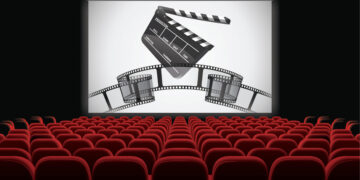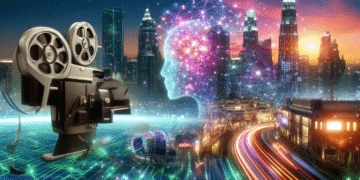The Role of a Director: Visionary Leadership in Film Creation
The director is the linchpin of any film production, responsible for translating the script’s vision into a compelling cinematic experience. They guide every aspect of the filmmaking process, from casting to editing, ensuring a cohesive and impactful final product.
1. Artistic Vision and Interpretation
A director’s primary role is to interpret the screenplay and develop a unique artistic vision for the film. This involves making decisions about the film’s overall look and feel, including its visual style, tone, and pacing. They collaborate closely with the cinematographer, production designer, and other key crew members to bring this vision to life. The director ensures that every element of the film, from the costumes to the music, serves the story and enhances the emotional impact on the audience.
2. Guiding Actors’ Performances
Directors work closely with actors to shape their performances and elicit the desired emotions and reactions. This involves providing actors with direction, feedback, and support throughout the filming process. A skilled director can help actors understand their characters’ motivations, navigate complex scenes, and deliver compelling performances that resonate with audiences. They create a collaborative environment where actors feel comfortable taking risks and exploring their characters’ nuances.
3. Technical Expertise and Problem-Solving
Beyond artistic vision, directors must possess a strong understanding of the technical aspects of filmmaking. This includes knowledge of cinematography, sound design, editing, and visual effects. They must be able to make informed decisions about camera angles, lighting, and sound to create the desired visual and auditory experience. Furthermore, directors are adept at problem-solving, often facing unforeseen challenges during production that require creative and efficient solutions to keep the project on track.
Crafting the Story: The Art and Science of Screenwriting
Screenwriting is the foundation of any film, blending artistic vision with technical skill to create a compelling narrative. It’s more than just writing dialogue; it’s about crafting a world, developing characters, and structuring a story that captivates an audience.
1. The Core Elements of a Screenplay
A screenplay typically includes elements like scene headings (INT. COFFEE SHOP – DAY), character names, dialogue, and action lines. Screenwriters must master formatting conventions to ensure their work is readable and professional. Software like Final Draft and Celtx are commonly used to maintain these standards. The core is strong storytelling; a compelling narrative, believable characters, and a clear structure are crucial.
2. The Screenwriting Process
The screenwriting process often begins with an idea, which is then developed into a treatment or outline. This provides a roadmap for the story. From there, the screenwriter writes the first draft, which is then revised and refined through multiple drafts, often with feedback from producers, directors, and other writers. This iterative process is crucial for creating a polished final product.
3. Skills and Qualities of a Screenwriter
Successful screenwriters possess a unique blend of creativity, discipline, and resilience. They need to be excellent storytellers, with a strong understanding of character development, plot structure, and pacing. Furthermore, they must be able to accept criticism and adapt their work based on feedback. Strong communication skills are also essential for collaborating with other members of the film crew.
The Editor’s Touch: Shaping the Narrative Through Precision
Film editors are the unsung heroes who weave together raw footage into a compelling narrative. They sculpt the story’s rhythm and emotional impact, ensuring the final product resonates with audiences.
1. The Art of Selection and Sequencing
Editors meticulously review hours of footage, selecting the best takes and arranging them in a sequence that enhances the story. This involves understanding pacing, rhythm, and how different shots contribute to the overall narrative. They make critical decisions about what to include and what to cut, shaping the audience’s experience and understanding of the film. The editor’s choices can dramatically alter the meaning and impact of a scene.
2. Technical Proficiency and Software Mastery
Modern film editing relies heavily on digital tools. Editors must be proficient in software like Adobe Premiere Pro, Avid Media Composer, or DaVinci Resolve. These tools allow for precise cutting, the addition of effects, color correction, and audio synchronization. A strong understanding of these technologies is essential for manipulating footage and creating a polished final product. Furthermore, staying updated with the latest software advancements is crucial for remaining competitive in the industry.
3. Collaboration and Communication
Film editing is not a solitary pursuit. Editors work closely with directors, cinematographers, and sound designers to achieve a shared vision. Effective communication is vital for understanding the director’s intent and translating it into a cohesive and engaging film. They must be able to articulate their ideas, provide constructive feedback, and work collaboratively to overcome creative challenges. The editor’s ability to navigate these relationships is crucial for the success of the project.
The Casting Director’s Quest: Finding the Perfect Fit
Casting directors are the unsung heroes who bridge the gap between script and screen, meticulously searching for the perfect actors to bring characters to life. Their work demands a keen eye for talent, excellent communication skills, and a deep understanding of the story being told.
1. The Art of the Audition
Casting directors orchestrate the audition process, from initial call-outs to final screen tests. They sift through countless headshots and resumes, conduct preliminary interviews, and guide actors through readings. This requires a delicate balance of creativity and organization, identifying potential while creating a comfortable environment for performers to showcase their skills.
2. Building Relationships with Talent
A successful casting director cultivates strong relationships with actors, agents, and managers. They attend theater performances, watch independent films, and stay informed about emerging talent. These connections are invaluable when seeking specific skills or characteristics for a role, allowing them to tap into a diverse pool of performers.
3. Collaboration with the Director
Casting is a collaborative process, requiring close communication with the director and producers. The casting director presents options, offers insights into each actor’s strengths, and helps shape the overall ensemble. This partnership ensures that the final cast aligns with the director’s vision and enhances the storytelling.
Q&A
Question 1: What is the primary role of a film director, and what key aspects of filmmaking do they oversee?
Answer: The director is the central figure in film production, responsible for translating the script’s vision into a compelling cinematic experience. Their oversight encompasses all aspects, from casting and guiding actors’ performances to making crucial artistic and technical decisions regarding cinematography, sound design, editing, and visual effects, ensuring a cohesive and impactful final product.
Question 2: What are the key stages in the screenwriting process, and what skills are essential for a successful screenwriter?
Answer: Screenwriting begins with an idea, developed into a treatment or outline. This roadmap guides the writing of multiple drafts, refined through feedback. Essential skills include strong storytelling, character development, plot structure, pacing, and the ability to accept and use constructive criticism. Excellent communication skills are also crucial for collaboration.
Question 3: How does a film editor contribute to the final product, and what technical skills are necessary for this role?
Answer: Film editors select and sequence footage to create a compelling narrative, shaping the story’s rhythm and emotional impact. They use software like Adobe Premiere Pro or Avid Media Composer for precise cutting, effects, color correction, and audio synchronization. Strong storytelling skills, technical proficiency, and collaborative communication are essential.
Question 4: What is the role of a casting director, and how do they collaborate with other members of the film crew?
Answer: Casting directors find the perfect actors for each role. Their work involves auditions, building relationships with talent (actors, agents, managers), and close collaboration with the director and producers to ensure the cast aligns with the director’s vision and enhances the storytelling. They present options and offer insights into each actor’s strengths.






